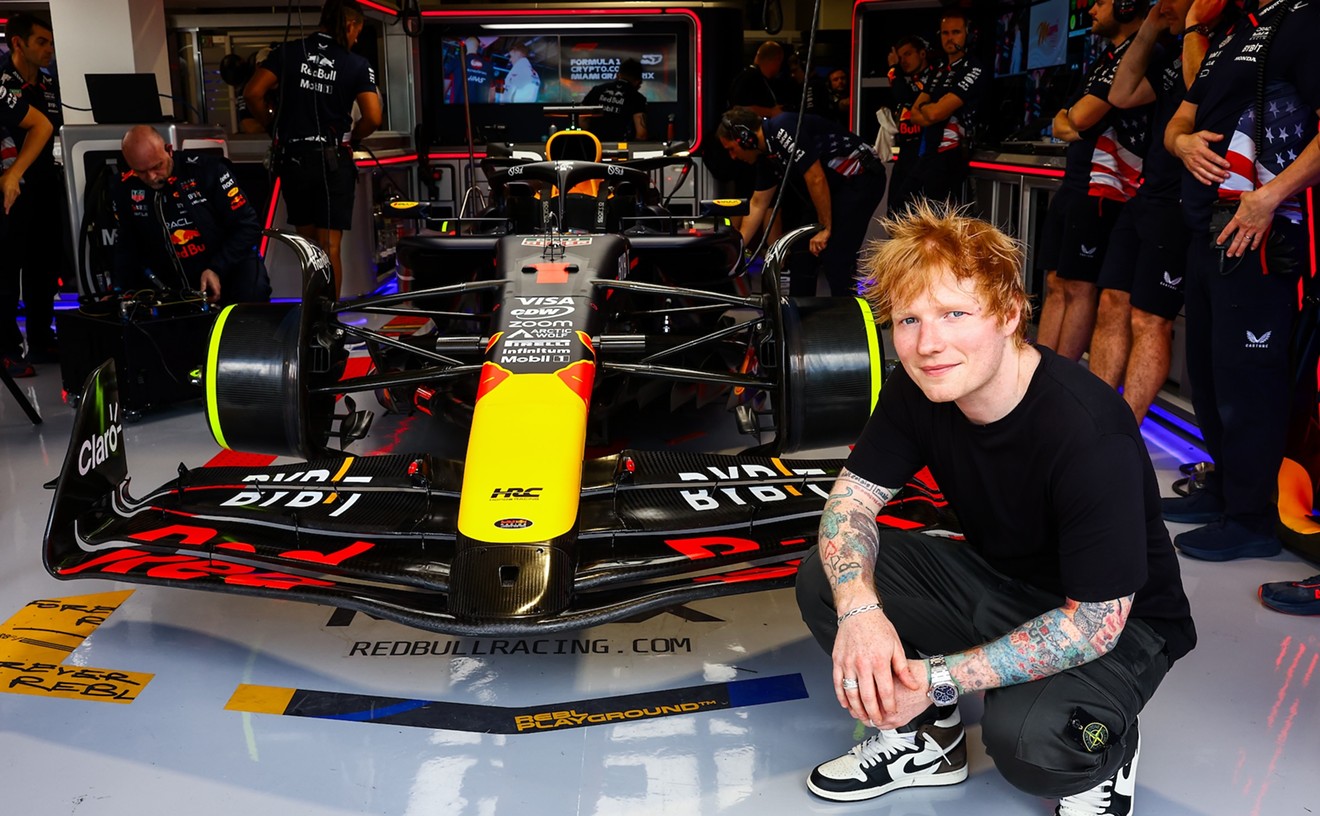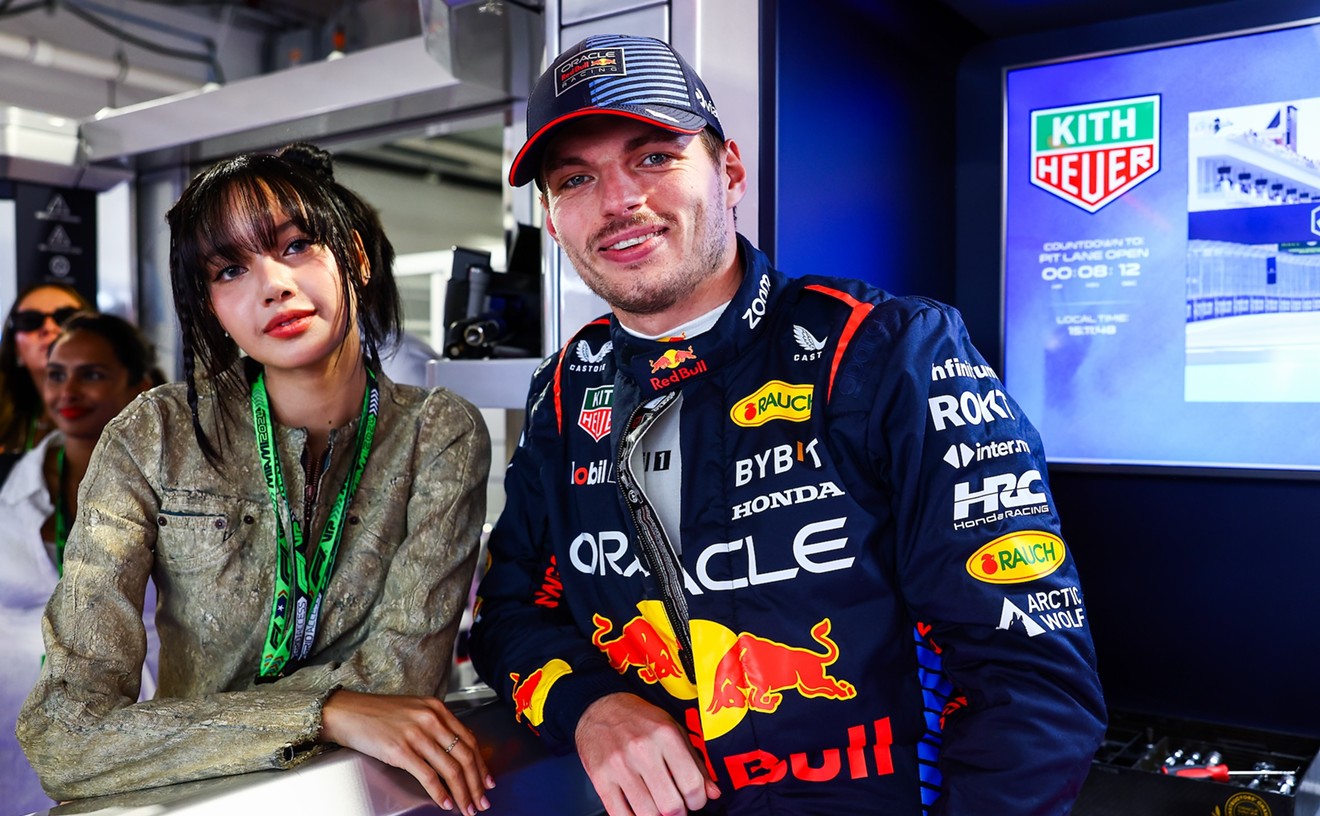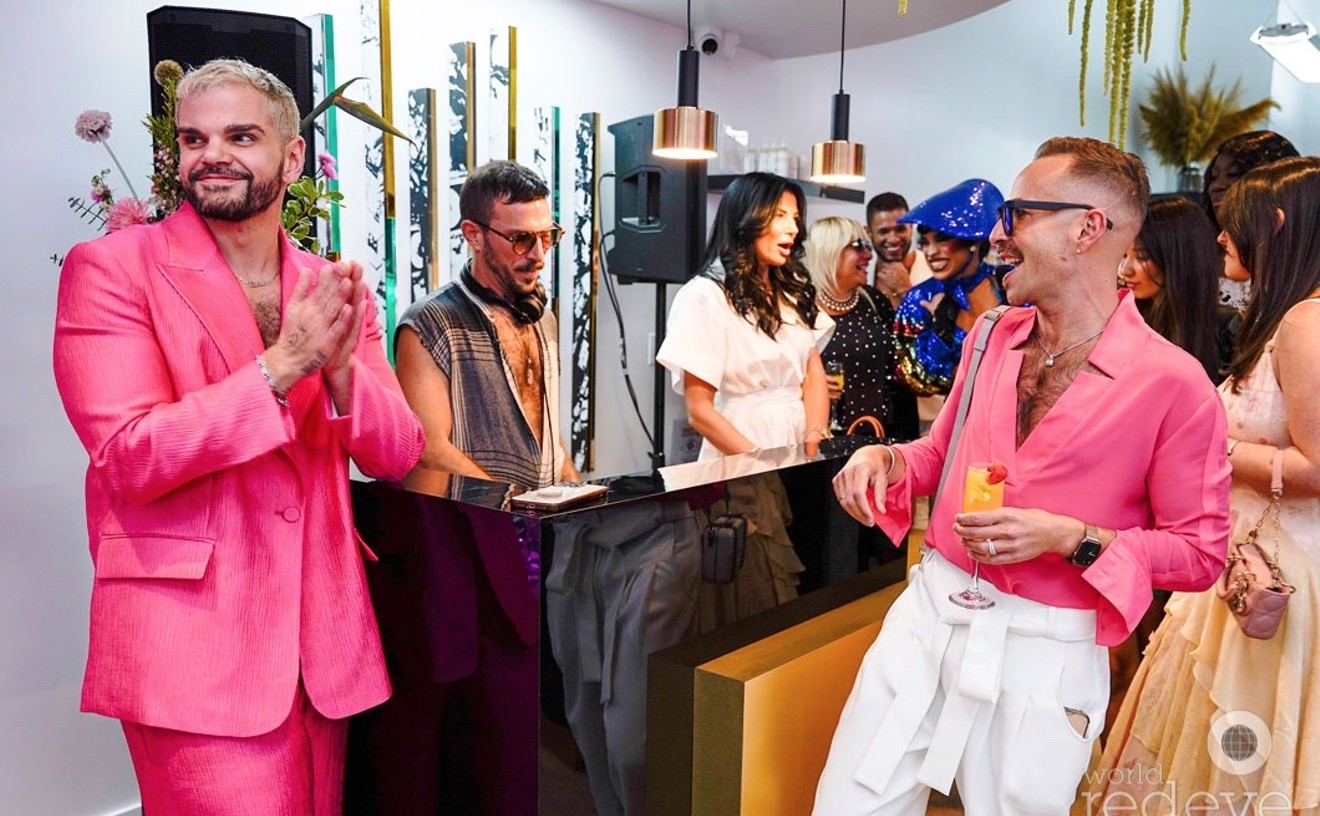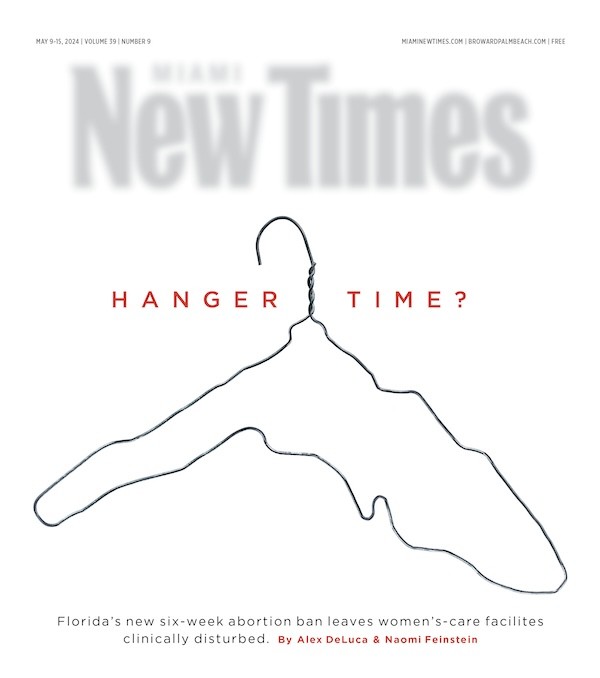A college and a government building in the urban center of a city such as Miami ought to be able to organize polished presentations of contemporary art as a matter of course. Two exhibitions currently on view prove Miami is still a fledgling in this arena.
John Bailly's series of screen prints, exhibited in the lobby of the Stephen P. Clark Government Center, is ambitiously titled "Wonder World." Drawing on an encyclopedic array of references from news media and the sciences, including cartography and astronomy, the twenty-odd silkscreen prints on display represent Bailly's efforts and those of students and faculty from Texas State University. The whole experience is a little underwhelming, partly because of the unfortunate gallery ambience, which resembles a cramped terrarium or fishbowl situated in the center of the bustling lobby. The lighting is wan and yellow, and the works are hung too casually, some of them having blue tape visibly detaching from the wall. The entire show seems to be expressing some sort of dystopic view with regard to humankind's struggle to distinguish itself amid the complexity and confusion instituted by the technological and social networks prevalent throughout history.
In his series of prints, Bailly juxtaposes images such as a globe, maps of European cities, and a human head with, for example, phrenological symbols. Some images portray the philosophies of Enlightenment, others the devastating wars of the Twentieth Century, but Bailly's prevailing MO is ambivalence. Among his works are those in which the figure of an ape is featured holding his arms aloft in a challenging or triumphant pose. Others present arrows, maps, and various directional graphics to illustrate not only a sense of being lost but also of being on the right track. The artist also creates a lexicon of spattered gestural marks and weblike textures. Each new layer of markings subtracts definition from the overall image, rendering it gradually illegible. This lack of order may be central to the artist's thinking, and yet even randomness as a visual protocol must eventually become a fixed composition.
Ultimately Bailly's works are digestible as rough drafts for pieces that demand further development in another, more flexible medium, a less restrictive field, perhaps as paintings. His prints fall into the trap commonly associated with printmaking, namely such an obsession with the mechanical processes of the medium that it inadvertently becomes a sluggish conductor for a rapid succession of visual ideas.
A few blocks away at Miami Dade College's Frances Wolfson Gallery is an exhibition titled "Pedro Vizcaíno." This Cuban native cut his teeth surrounded by street theater, elements of which are visible in his art today. Vizcaíno's previous works have concentrated on the inherent contradiction of humankind's peaceable and warlike tendencies. Those pieces depicting instruments of war contain equal doses of humor and alarm. Another of his works shows an airplane in what appears to be an air raid, but if you simply squint, it becomes merely a child's game acted on a playroom floor. His new works on view are low reliefs made from crudely cut cardboard and a child's palette of colors. Vizcaíno's Tanks depict hybrid creatures -- part machine, part predatory insect -- with exaggerated humanoid features: bulging eyeballs, hands grasping at cell phones, limbs thrusting to attack, cannons aimed like erect phalluses. He exploits the corrugated texture of the cardboard with rubbings, and enlivens its surface with splotches of paint and scribbled drawings of simple symbols, such as stars and eyes. Molded cardboard packing material generally used to transport fruit and wine is put to good use as the tanks' viscera. The two paintings displayed, collectively titled Gangueros, depict handguns that morph into shoes, cell phones, hands, and heads, fusing the weapon to the shooter.
It's not difficult to discern Vizcaíno's influences, chief among them Picasso, particularly the anguish and urgency of one of the greatest antiwar artworks, Guernica. However, the brash pop gestures of Willem de Kooning, the primal bluntness of Philip Guston, and the bumptious assemblages of Red Grooms all had an obvious impact.
The shock-and-awe potential of Vizcaíno's work could be seriously ramped up, to borrow some of the military's own language. The tanks are undeniably unruly, but to be really gruesome, to inspire terror in an audience blasé about Humvees parked at local shopping malls, the artist may have to grab a bigger paintbrush. These tanks, magnified even five times in scale, perhaps even more assertively displayed three-dimensionally, would have greater impact: more menacing, more outrageous, more unglued. Instead of hanging each one on the wall in the deferential manner of an easel painting, the installation would benefit tremendously from a larger wall and a more aggressive battalion formation.
In the cases of Bailly's and Vizcaíno's exhibitions, the disappointing gallery settings are worse than mundane. They are downright shabby and make it difficult to concentrate on the aesthetic experience. Admittedly, the Frances Wolfson Gallery is Miami Dade College's second-string venue, and it's obvious The Art Gallery at Government Center is not attempting to become a major player in the art world. However, it would behoove the city's public institutions to put more effort and greater resources into their programs, to commit to showing dynamic and cutting-edge visual art, and not to be stingy with the presentation. Perhaps then Joe Q and Jane Public might very well stop and take notice.










